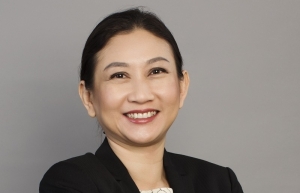Legal reforms pave the way for healthtech advancements
The recent enactment of the Law on Medical Diagnosis and Treatment and its implementing Decree No.96/2023/ND-CP for the first time establishes a legal framework for telemedicine.
 |
| Duyen Ha Vo, senior partner, Vilaf (left) and Dan Thanh Tran senior associate, Vilaf |
Meanwhile, the lift of foreign ownership restrictions on online IT services under the Comprehensive and Progressive Agreement for Trans-Pacific Partnership (CPTPP) and the EU-Vietnam Free Trade Agreement (EVFTA) fosters investment as well as merger and acquisition activity in the country’s burgeoning healthtech sectors.
Telemedicine in Vietnam began during the recent pandemic but lacked formal legal support. The enactment of the new law and decree, effective from January, established a legal framework for telemedicine. This legislation not only formalises telemedicine but also specifies the types of telemedicine eligible to be covered by state health insurance.
The new law defines “remote medical diagnosis or treatment” (referred to as telemedicine here) as a form of medical diagnosis or treatment where there is no direct contact between the healthcare professional and the patient and, instead, the diagnosis or treatment is conducted through IT devices.
A medical facility wishing to provide telemedicine services must satisfy statutory conditions for such services, including, among others, having suitable technical infrastructure and facilities to ensure safe and secure transmission, display, processing, and storage of data. It must conduct a “notification on eligibility” for rendering such services with the local health authority, or with the Ministry of Health (MoH) in the case of a medical facility directly under its jurisdiction.
The notification dossier must include a list of remote services to be provided and evidence of satisfying statutory conditions for remote service provision. After submission of an adequate dossier by the medical facility, the relevant health authority will publicly disclose the filing medical facility’s telemedicine activities on both its web portal and the national portal for managing medical diagnosis and treatment.
In implementing Decree 96, the MoH sets out a list of 50 diseases eligible for telemedicine. The list includes, among others, seven musculoskeletal conditions, four cardiovascular diseases, four dermatological diseases, six neurological disorders, and much more, including a few other conditions or therapies such as obesity, post-surgery care, and post-cancer care.
If a medical facility wishes to conduct telemedicine for a disease or condition not covered on the above list, it must apply for a special pilot programme approval from the MoH. These pilots are not eligible for state health insurance benefits.
Parallel to the aforementioned developments in healthcare legislation, Vietnam has committed to opening full access for foreign investment in non facilities-based telecom services (both basic services and value added services) as of January 2024 with respect to the CPTPP, and non facilities-based value added telecom services as of August 2025 regarding the EVFTA.
Until the above respective lifting dates, 100 per cent foreign ownership has not been feasible for data processing services because it is classified as non facilities-based value-added telecom services under all applicable international trade agreements.
With the approaching lift of foreign ownership restrictions under the CPTPP and the EVFTA, opportunities for foreign investment in segments relevant to online data processing are poised to expand. This shift could potentially foster foreign investment in various healthtech services, such as mobile applications for symptom and wellness tracking and medication management, online platforms for storing and managing patient health records, and cloud-based healthcare solutions.
According to VNETWORK, in early 2023, there were nearly 78 million internet users and about 70 million social network users in Vietnam. Data released by the Ministry of Industry and Trade reveals that Vietnam’s retail e-commerce market size surged to nearly $21 billion in 2023, marking a remarkable annual growth rate of 25 per cent. This propelled Vietnam onto the list of the top 10 nations globally with the highest e-commerce growth rates.
The above burgeoning market of tech-savvy consumers presents enticing opportunities for innovation and investment in healthtech.
Digital health solutions have gained traction among hospitals, contributing to the operational efficiency of public healthcare facilities. According to a KPMG report, around 92 per cent of public hospitals have outsourced digital solutions development to local IT companies, while major private hospital chains and foreign invested hospitals have upgraded their digital infrastructure.
Numerous healthtech startups have emerged, securing successful rounds of fundraising and expanding operations locally and regionally. The government has shown significant support for advancing healthtech initiatives, evident in the endorsement of a comprehensive master plan for the healthcare network.
This plan, spanning this decade and with a vision extending to 2050, aims to integrate technology across various healthcare services, including medical treatment, rehabilitation, preventive measures, and pharmaceutical testing.
Additionally, to further bolster consumer trust in digital services, the government has rolled out regulations aimed at enhancing data privacy and consumer protection. The ongoing changes hopefully will spur innovation and enhance public health.
 | Largest partners promotion round in VILAF history announced VILAF has become the business law firm with the largest number of partners in Vietnam and has expertise knowledge and experiences in a wide variety of legal areas. |
 | New regulation increasing transparency in corporate bond market The government has promulgated Decree No.65/2022/ND-CP to amend and supplement certain articles of Decree No.153/2020/ND-CP on corporate bonds. Decree 65 took effect on September 16. |
What the stars mean:
★ Poor ★ ★ Promising ★★★ Good ★★★★ Very good ★★★★★ Exceptional
Related Contents
Latest News
More News
- Main drivers for Vietnam’s digital economy future (December 03, 2025 | 11:35)
- Pivotal stage of growth paves way for rise in M&As (December 03, 2025 | 10:00)
- Positive projections for M&A interest from Thailand (December 03, 2025 | 09:40)
- Manifesting the first line of defence in cybersecurity (December 03, 2025 | 09:00)
- The transformational role AI can play in accounting arena (December 03, 2025 | 08:00)
- Unlocking 5G-AI potential in Singapore (December 03, 2025 | 08:00)
- Data-driven strategies vital for a fast-evolving nation (December 02, 2025 | 09:41)
- Policy to practice: how Vietnam can lead the region (November 26, 2025 | 16:03)
- Mobilising private capital at scale vital for climate battle (November 26, 2025 | 15:36)
- VILAF and Yoon & Yang launch Vietnam - Korea Practice Unit (November 26, 2025 | 15:16)

 Tag:
Tag:





















 Mobile Version
Mobile Version